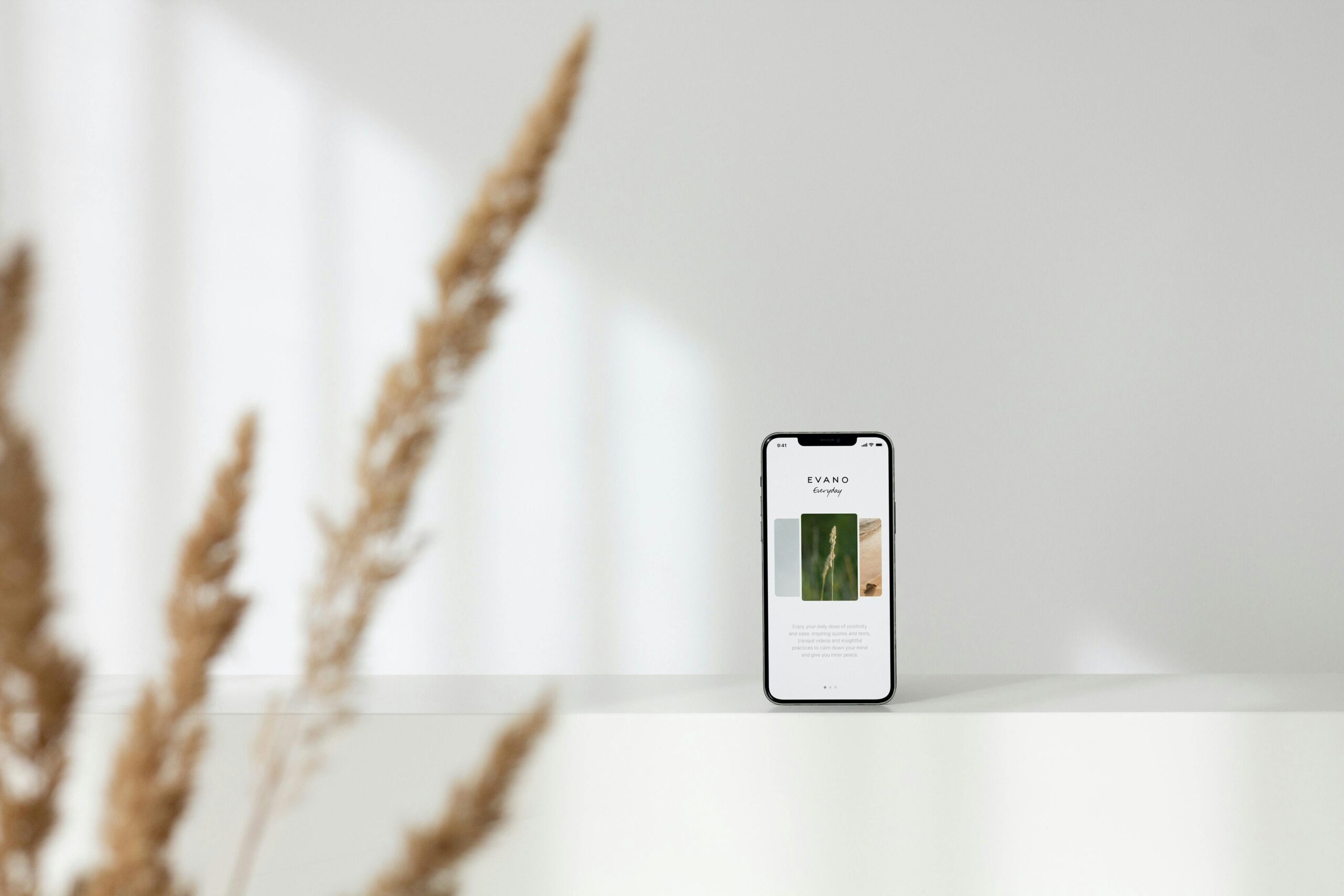Analyzing UI and UX trends is essential to anticipate user needs and optimize the experience you offer. By adopting trendy features and designs, your business can improve its efficiency and offer innovative experiences.
1. Minimalism, still a big UI UX trend
In UX and UI, minimalism is a quality. On the one hand because it allows for faster page loading (and therefore more efficient for the user), on the other hand because it allows only the most important elements to be shown.

In design, this will involve white spaces, of course, but also a more than moderate use of notifications and pop-ups. You will also avoid an excess of innovative tools: a few will be welcome, but you will rely primarily on techniques already known (and validated) by Internet users.
2. Artificial intelligence to the rescue of UX
By simplifying the way we interact with digital systems, AI significantly improves the user experience. From intelligent voice assistants to chatbots, AI offers a more natural and intuitive interaction, reducing the need for a complex user interface.
In addition, machine learning, a subset of AI, allows for more adaptive and personalized design, by anticipating user needs based on their past behaviors. A good solution to save time for the many UX/UI designers.
Artificial intelligence can also open up new opportunities for sites, such as new interactions available thanks to AI, or making your site dynamic by reacting to the visitor’s actions.
3. Even more micro-interactions
Micro-interactions are today an effective way to captivate your audience, and remain one of the main trends in UX and UI design. You’ll see:
- Tactile reviews in mobile apps.
- Color changes according to the program states.
- Visualization of page loading.
- Animations during transitions.
These small details make navigation more pleasant and warmer, and prolong visitor engagement.
4. Less conventional navigation
Attracting the attention of users is a constant struggle for designers who must constantly renew themselves. A truly unique design allows you to stand out in the eyes of Internet users, who are accustomed to ever more technological prowess.
It’s up to you to bet on new arrangements to attract users:
- Combined horizontal and vertical scrolling.
- Exploration by sliding.
- …
However, be sure to preserve intuitive navigation! User comfort must always be at the heart of your concerns.

5. Ever more personalization
Personalization is a key lever for engaging users, and has been for several years now. Use big data to offer tailored experiences in real time (according to time, location, etc.). You have to go beyond integrating first names or birthday wishes, your users are already used to all that.
Your web design then plays a role in personalization, and this can include:
- Dynamic content.
- Themes based on user preferences.
- Personalized browsing experiences.
6. Abstract data visualization
Classic tables and lists are outdated, they tend to spoil the design of your home pages. Opt for a more creative visualization:
- Reinforced visual communication.
- Originality.
- More attractive and functional user interfaces.
- Reduction of the familiarization time between the user and the service or product.
- Depth of the site.
7. Dare to use bold typography
Large fonts and strong contrasts dominate in 2025, bringing a modern and striking touch to designs.
Texts, important words and impactful numbers will be highlighted with contrasting colors to create a strong visual hierarchy and encourage Internet users to engage with the website. Also, consider revisiting serif typography for a timeless look.
8. Ethical design
In 2025, designers are, as they have been for several years now, called upon to adopt practices ethical, respecting a hierarchy of human needs:
- Respect for human rights: Privacy, diversity, accessibility.
- Effort: Reliability and performance.
- Overall experience: Pleasure and added value.
Ethical design therefore aims to support all these layers simultaneously, and it is necessary to balance business objectives with human needs for a more respectful experience.
9. Interactive storytelling
Interactive storytelling has become an essential pillar for capturing users’ attention. By combining classic narration with interactive elements, it transforms a simple visit into a memorable experience.
- Interactive stories: Use animations and scrolling effects to tell a story as the user explores the page. Brands like Apple and Nike use interactive storytelling to present products by telling their design story.
- Personalized choices: Give the user the opportunity to influence the story
- Immersive experiences: Integrate full-screen videos, sound effects and animations to completely immerse the user in a story.
By focusing on captivating storytelling, you can transform complex information into engaging content, improving user retention and loyalty.
10. Developing the voice user interface (VUI)
With the growing popularity of voice assistants like Siri, Alexa, and Google Assistant, the Voice User Interface (VUI) has become essential for smoother and more natural navigation.
Users expect to be able to interact with applications via voice commands, especially on mobile and on devices without a screen like smart speakers. By integrating voice UX, you can simplify access to information and services for a hands-free experience.
Also think about accessibility: voice interfaces are particularly useful for people with visual or motor disabilities. They offer them increased autonomy by facilitating interaction with technologies.
11. Inclusive and accessible design
Digital accessibility is no longer a simple addition, but a must. Inclusive design aims to create interfaces that adapt to all users, regardless of their abilities.
- Text and contrast: Use easily readable fonts and ensure sufficient contrast between text and background. Increase the size of your fonts and line spacing. Use text effects (italics, bold, or underline) to highlight important information.
- Universal navigation: Provide clear navigation. Optimize your site for keyboard commands for users who cannot use a mouse.
- Accessible components: Make sure your buttons, forms, and other interactive elements are easily usable for people with motor limitations. For example, areas of

